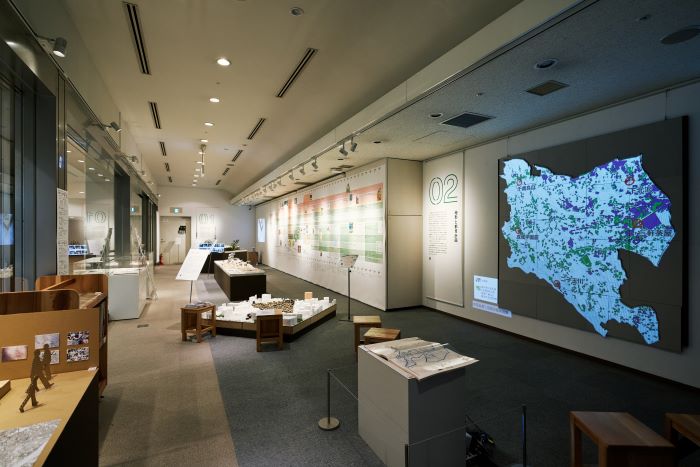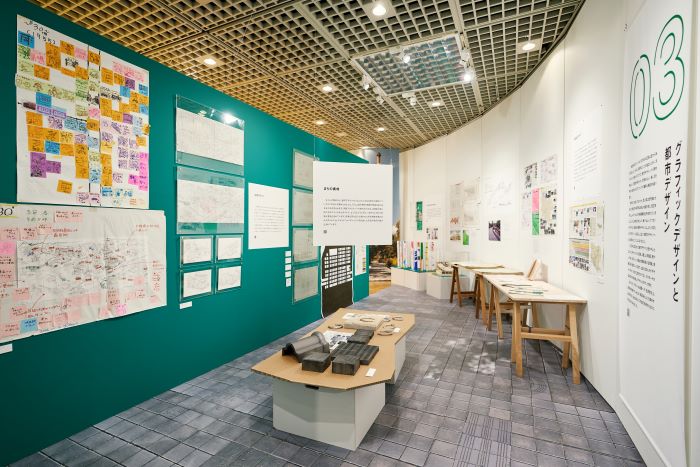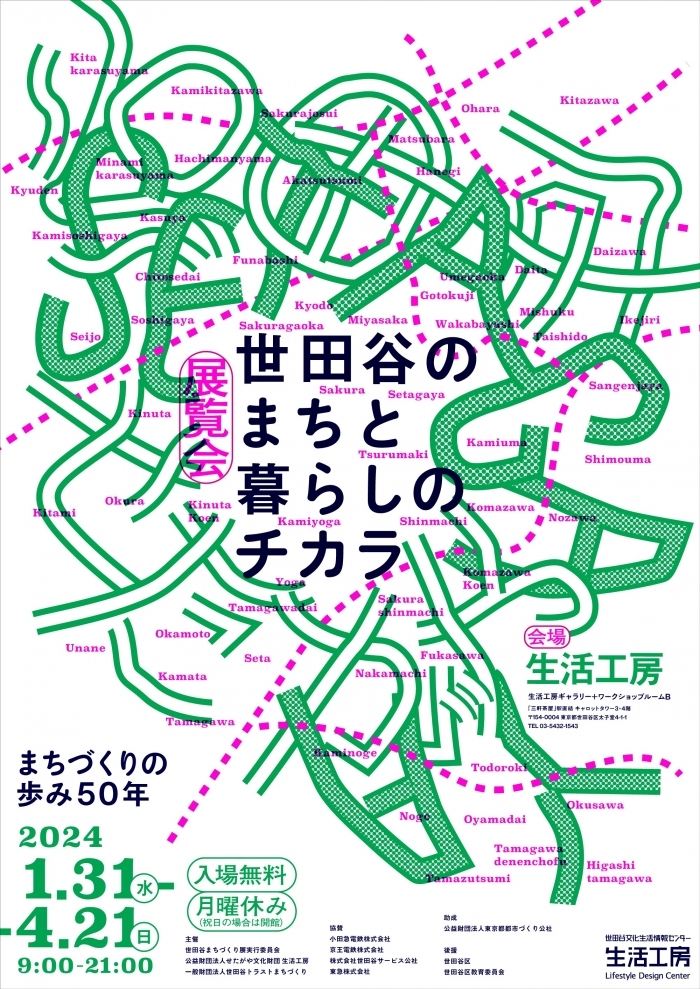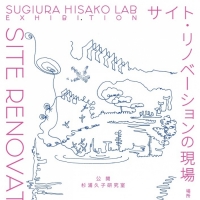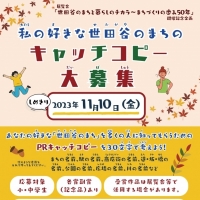世田谷区は、鉄道が敷設されたことをきっかけとして1920年代に都市化が始まり、今日にいたるまで東京の郊外として発展してきました。たくさんの人が集まり住むところには、そこに独自の生活文化が生まれます。一世紀に及ぶ都市化のなか、世田谷で発達したそのような生活文化の一つに、「まちづくり」があります。
この言葉が広く世の中の人々に知れ渡るようになったのは1970年代のことです。世田谷区では住民参加を掲げ、1980年代からまちづくりや公共施設の整備が進められました。また、よりよい地域づくりには区民の参加が不可欠として、1990年代以降、区民のさまざまなまちづくりの活動を支援するしくみが生まれました。
まちづくりは、世田谷の中でどのように発達し、何を残してきたのでしょうか。そしてそれは地域の人々の「まちと暮らし」をどう豊かにしてきたのでしょうか。
本展では、「まちづくりの空間」、「地形と都市計画」、「グラフィックデザインと都市デザイン」、「ワークショップと道具箱」、「市民のデザイン」の5つのパートにより、世田谷において住民参加のまちづくりがつくり出してきた「まち」と、そこで繰り広げられてきた「暮らし」を見渡します。
Setagaya City’s urbanization began in the 1920s with the decision to construct a railroad, and it has continued to develop as a suburb of Tokyo through today. Unique lifestyle cultures are created in places where many people gather and live. One such lifestyle culture that has developed in Setagaya over the course of a century of urbanization is machi-zukuri (community development).
The term machi-zukuri began to be well-known to people in Japan in the 1970s. In Setagaya City, community development and public facilities improvement have been advanced with the idea of “people’s participation” since the 1980s. In addition, as better participation has become essential for community development, since the 1990s, a system to support various community development activities by the people of Setagaya has been created.
How has community development progressed in Setagaya, and what legacy has it left behind? And how has it enriched the “community and lifestyle” of the local people?
This exhibition will look at the “community” created through the community development with people’s participation in Setagaya as well as the “lifestyle” that has grown through this. It will do so in five parts: “Spaces for Community Development,” “Geographic Features and Urban Planning,” “Graphic Design and Urban Design,” “Workshops and Toolboxes,” and “Citizens’ Design.”
プレス関係の皆さまへ
こちらからプレスリリースがダウンロードできます
「私の好きな世田谷のまち」キャッチコピーコンクール 結果発表!
>こちらのページをご覧ください。
下北沢B&B、新宿紀伊国屋書店でブックフェアを開催!
>こちらのページをご覧ください。
会場で展示している年表をPDFで公開中!
>こちらからダウンロードしてください。
